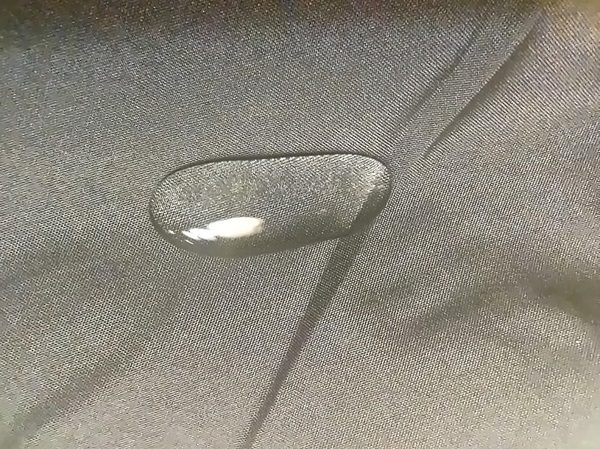|
January
2024 |
| Hydrophobic Treatment of Consumer Products |
|
During the recent Christmas season in our household, a ton of presents exchanged hands. Among the variety of gifts were several consumer products showcasing hydrophobic properties. Allow me to highlight three noteworthy instances: First, I acquired a golf umbrella intended for gifting. Although the product listing touted it as "water-repellant," there was no explicit mention of "hydrophobicity." Upon receiving the item, I conducted some tests. Notably, the water contact angle exceeded 90°, and the roll-off angle was impressively under 5°. In essence, raindrops effortlessly rolled off the umbrella without saturating the fabric, a clear indication of its treated hydrophobic nature. See photo below.
Similarly, a new shower curtain purchased for my wife's bathroom exhibited hydrophobic characteristics with a remarkably low roll-off angle. Despite being labeled as "waterproof," the product description made no specific reference to its hydrophobic properties or the commendably low roll-off angle. Lastly, a car cover acquired as a gift for my son promised to be "waterproof," yet the listing omitted any mention of hydrophobicity or non-wetting attributes. Remarkably, this item demonstrated both low roll-off angles and water contact angles exceeding 90°. It's noteworthy that all three items were chosen and purchased without deliberate consideration of their potential hydrophobicity. None were explicitly labeled as "hydrophobic," and their non-wetting qualities were vaguely alluded to through generic descriptions such as "water-repellent" or "waterproof" - attributes one would naturally expect in products like umbrellas, shower curtains, and car covers. An emerging trend is the prevalence of consumer products treated to exhibit hydrophobic properties. Numerous cost-effective methods exist for imparting non-wetting characteristics to these products. The predominant approach involves employing chemical coatings, with fluoropolymers, notably Teflon, taking the lead. Fluoropolymers are widely utilized across diverse industries and consumer goods due to their outstanding water-repellent properties. These coatings establish a low-energy surface, rendering it challenging for water to wet or adhere to the material. Fluoropolymer coatings find common application in cookware, clothing, outdoor gear, and various surfaces to confer water resistance. Their popularity stems from their effectiveness, durability, and adaptability across various applications. Nevertheless, it's
important to acknowledge that alternative methods, including
nanotechnology-based coatings and hydrophobic sprays, are also
prevalent. The selection of a specific method often depends on the
unique requirements of the product, the intricacies of the
manufacturing process and the cost of applying the surface
treatment. |
| Happy New Year |
|
At ramé-hart Instrument Co., we extend our warmest wishes for a Happy New Year to you. May the year 2024 bring productivity, prosperity, and fulfillment to both you and your team. We eagerly anticipate the opportunity to assist you with our expertise in contact angle and surface tension instrumentation whenever the need arises. |
|
Regards,
Carl Clegg |

